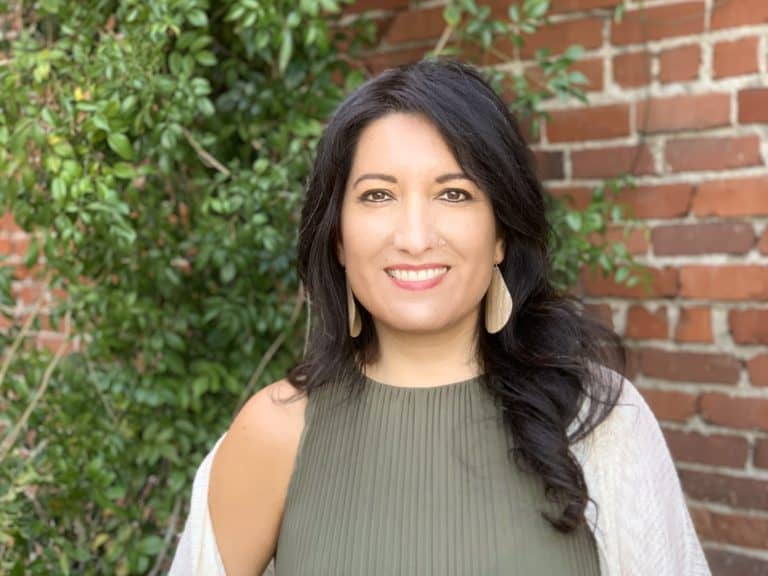
This Lent we are asking, “How might our lamenting lead us to the liberative future of shalom God promises us? What wisdom do those on the margins have that can help us envision the hope for liberation, even while we lament the current state of things?”
Today’s post first appeared in Learning Lament, Building Empathy, and Joining Our Sisters at the Intersection of Race and Gender, the Summer 2021 issue of Mutuality magazine from Christians for Biblical Equality (CBE). We share it today by generous permission of CBE and the author.
***
Lamento y Liberación | Lament and Liberation
We carry our stories, nuestras historias, in our bodies, and different bodies carry different burdens. We need to tell our stories, remember our bodies. We need also to cross the borders of historical hostilities, like the persistent Canaanite mother in Matthew 15:21–28, if we are to seek an honest and robust paradigm of reconciliation and justicia.
In this controversial gospel story, the kingdom of heaven is depicted as an immigrant mother who crosses the border seeking mercy for her demonized daughter. She is a dreamer. She dreams of a future for her daughter without demons. A faithful reader must reckon with the complex socio-political tensions between Israel and Canaan. If Jesus heals her daughter of this demon, can he heal hostilities among enemies? If Jesus heals this heir, can he heal inherited hate? Has the blood of Jesus lost its power to heal us?
We must lament the wound before we can be liberated from the effects of the wound. We must first reveal the wound in order to heal the wound. Racism and sexism are intersectional and interlocking systems that are self-perpetuating, self-protecting, and not self-correcting. Therefore, they must be spiritually, socially, and prophetically named and disrupted. Collective lamentation leads to collective liberation.
Racism and sexism intertwined
Sexism is as old as dirt. All oppressive systems that abuse power have been built on the backs of women by those who see the curse of Genesis 3 as a blessing. Systems that subjugate, suppress, and silence women often justify this marginalization by claiming male supremacy over women by order of creation and order of temptation.
The demons of systemic racism only compound the trouble of systemic patriarchy. Hierarchical systems thrive on power dynamics. Therefore, the more factors that divide, the more complex the oppression, with women of color always landing at the bottom of the ladder.
To illustrate this complex system, we only need to do a quick search on the women’s suffrage movement and the 19th amendment and do a comparative analysis on which years women from certain ethnic groups were able to vote. Caucasian women were first able to vote in 1919, Asian immigrant women in 1952, Native American women in 1962, African American women in 1965, and Latina women in 1975.1
In my intersectional and embodied reality as a Latina, a pastora, and an immigrant, I can’t address the inequity of my gender without addressing the shackles of the social construct of my ethnicity/race. Intersectionality is critical; to ignore it is inadequate in egalitarianism. The degree of oppression and degree of opportunity a woman experiences is directly affected by her race, gender, class, ability, and ethnicity.2
Where is the prophetic voice of the egalitarian church?
Sadly, the church has not always been a credible witness to the reconciling power of Christ and the liberating power of the Cross. In fact, the church has been historically complicit in muting the evidence of systemic racism, because racism is self-perpetuating, self-protecting, and not self-correcting; it must be prophetically disrupted. Even the egalitarian movement, in its advocacy of women, has not been immune to systemic racism.
When I read from the deep wells of my African American siblings’ history with the Bible, my soul catches on fire. The beating of Frederick Douglass’ aunt Esther and his altercation with a slave-breaker offer a gut-wrenching, eye-witness account of the excessive force where black, formerly enslaved women were castigated by a church-going master, no less.3
I see the historical, blatant inconsistency that professed faith in Christ does not always lead to the liberating actions of Christ. That a slave-owner could beat a woman an inch away from death on a Saturday, awake to attend church himself on a Sunday, and return to his rage against enslaved people on a Monday is a strong departure from Christ’s actions, to say the least.
There is likewise inconsistency in the history of the Christian egalitarian movement. In a chapter titled “The Battle over Female Preaching,” Catherine Brekus researches the Methodist Church’s empowerment of women in the 1830s and 1840s.4 Revivals led by women were popular and highly attended. However, black female preachers like Zilpha Elaw faced greater hostility than white women. Elaw once preached in front of a group of angry white men “with their hands full of stones.”5 Furthermore, some of these female preachers wanted to be separated from and distinct from female preachers who were also preaching abolition of slavery. They wanted freedom and equality for themselves to preach Christ, but they did not fight for liberation for their black sisters from enslavement to preach the same.
This inequity is a historical rhythm that can be excavated in many more systems if one is adept at following the rhyme of the oppression. We have not all been set free at the same time.
Racism has joined with sexism to dismember women of color at a cost to our heads, hearts, bodies, and souls. It has also dismembered women from women and women from men. We must repent, restore, and re-member back the places long devastated and rebuild the broken bride of Christ. We are either fighting against the demonic, social, and spiritual systemic powers of racism and sexism or we’re complicit, actively or passively, in these systems.
Christian egalitarians ought to be the first at the reckoning and repentance because we know the God who healed the Canaanite woman. We ought to be the first to identify and lament racism because we serve a border-crossing God, a bondage-breaking Jesus, and a boundary-breaking Spirit.
Entering the liminal place of racism and sexism
Confession and repentance do not happen in isolation and neither do communion and restoration. We must tell where we have come from and where we are going. We must tell our stories from living in the liminal place as women of color.
Sang Hyun Lee is an Asian American theologian who has studied the Galilean identity of Jesus as a marginalized one. His status is on display when someone asked, “Can anything good come out of Nazareth [of Galilee]?” (John 1:46). Jesus was socially marginalized because of his Galilean ethnic status, and in this way, he is able to identify with “ethnic” women. Galilean women were mestiza women, mujerista women, womanist theologians, immigrant women, liminal women, in-between and intersectional women. Lee explains that to be liminal, to be in-between, is to have “psychological uncertainty between two or more social worlds.”6
In the same way that Jesus crosses boundaries as a marginalized person, he crosses the boundaries of ethno-racial identity and gender, as Loida Martell-Otero argues further. The dominance of whiteness is a weightiness that distorts both identity and belonging. Martell-Otero argues in Latina Evangélicas that:
We recognize the social symptoms of being invited to places…where we must dress in white in order to survive as a people of color who speak and dance in different rhythms and see life from different perspectives. We have learned to survive amid a dominant group who prefers to captivate and dominate, rather than partner and form communal relations in order to become familia to each other.7
The demon of domination that resulted from the curse in the garden predisposes the subjugation of women, especially women of color like the Canaanite mother. Jesus in his marginalized identity, his welcoming of female disciples, and his victory on the Cross, defeats that demon and sets an exemplar of a new imagination across gender and ethno-racial barriers. Any supremacy that sets itself up against the supremacy of Christ runs counter to the Cross.
To live into the hostility of the garden is easy, but Jesus–the first abolitionist–came to abolish the enmity between Jew and Gentile, enslaved and free, male and female, to create a new humanity (Eph. 2:15-16, Gal. 3:28). Jesus was the first to lay down privilege, depicted beautifully in the Christ hymn of Philippians 2. Jesus did not consider equality with God as something to be grasped but made himself a servant. What does it look like to heal the hostility, resisting the urge to dominate, and instead to liberate and collaborate?
Lamentation must lead to liberation
The church that follows the Galilean Jesus who walked under the Middle Eastern sky has the opportunity to embody prophetic lamentation which leads to historical and prophetic liberation. The first step must be repentance and confession of our complicity with the cosmic power of sin manifested in racism and sexism. Yet, the blood of Christ, our Liberator, has not lost its power to heal us from the violent structures between us. For if we confess our sins of racism and sexism, God is faithful and just to forgive us of our sins, to heal the hostility among us and cleanse us from all unrighteousness (1 John 1:9).
May our collective lamentation lead us to communal liberation by the power of God’s Holy Spirit. If our lament is honest and deep, intersectional and incarnational, how much more will our liberation be? I pray that our storytelling will also be liberating. We carry our stories, and we must tell our stories as women of color. The constellation of voices is necessary for the fuller melody of liberation. This is part of doing teología en conjunto (communal theology).
Here is a bit of mine as I see it from my corner in the vast sky:
I am from…
I am from climbing mango trees in the back patio.
I am from hot tropical Nicaraguan sun browning my skin.
I am from black beans lazily boiling over a gas stove.
I am from Spanish paella with vino Rioja,
I am also from Nicaraguan nacatamales wrapped in plantain leaves around my mestiza soul.
I am from in between oceans, in between Spanish flamenco and wooden marimbas.
I am from in between Hail Marys and Protestant coritos.
I am from rocking chairs in the arms of my mother singing sweet lullabies.
I am from abuelitas raising orphaned grandchildren.
I am from sad yellow sunsets and her empty rocking chair no longer singing my soul.
I am birthed from abuela’s prayers and rice recipes.
I am from cooked cantos de liberación.
I am from the motherland and the conquered land,
I have colonizer blood and colonized blood coursing through my veins.
I am from “pórtate bien, hazle caso a tu abuelita, cuida a tu hermanito porque eres la mayor.”
I am from courageous love with the Spanish accent and indigenous dirt.
 Inés Velásquez-McBryde (https://inesmcbryde.com) is a pastor, preacher, reconciler and speaker. She is Co-Lead Pastor of The Church We Hope for, a multiethnic church planted during the 2020 pandemic in southern California. She is originally from Nicaragua. Inés earned her MDiv at Fuller Seminary and was a Chaplain at Fuller for 2 years. She has 22 years of combined ministry experience in church-planting and pastoral staff leadership in multi-ethnic churches. She has spoken in local church pulpits across the nation, as well as at national and regional conferences sharing her passion for multiethnic church planting, racial reconciliation, justice, and the full inclusion of women in pastoral leadership. She was the recipient of the Ian-Pitts Watson Preaching Award at Fuller Seminary. Inés has been married to Rob for 19 years and loves being a soccer mom to their son, Nash. She loves salsa dancing and café con leche.
Inés Velásquez-McBryde (https://inesmcbryde.com) is a pastor, preacher, reconciler and speaker. She is Co-Lead Pastor of The Church We Hope for, a multiethnic church planted during the 2020 pandemic in southern California. She is originally from Nicaragua. Inés earned her MDiv at Fuller Seminary and was a Chaplain at Fuller for 2 years. She has 22 years of combined ministry experience in church-planting and pastoral staff leadership in multi-ethnic churches. She has spoken in local church pulpits across the nation, as well as at national and regional conferences sharing her passion for multiethnic church planting, racial reconciliation, justice, and the full inclusion of women in pastoral leadership. She was the recipient of the Ian-Pitts Watson Preaching Award at Fuller Seminary. Inés has been married to Rob for 19 years and loves being a soccer mom to their son, Nash. She loves salsa dancing and café con leche.
This article first appeared in “Learning Lament, Building Empathy, and Joining our Sisters at the Intersection of Race and Gender,” the Summer 2021 issue of Mutuality magazine, and is used by generous permission of CBE and the author.
***
Notes
1. “Not All Women Gained the Vote in 1920,” PBS, June 6, 2020, accessed May 13, 2020.
2. “Intersectionality,” Merriam-Webster Dictionary, s.v., accessed April 20, 2021.
3. J. Kameron Carter, “Race, Religion, and the Contradictions of Identity: A Theological Engagement with Douglass’s 1845 Narrative,” Modern Theology 21, no. 1 (January 2005): 37–65.
4. Catherine A. Brekus, Strangers and Pilgrims: Female Preaching in America 1740–1845, (Chapel Hill: University of North Carolina Press, 1998), 271.
5. Brekus, Strangers and Pilgrims, 272
6. Sang Hyun Lee, From a Liminal Place: An Asian American Theology, (Minneapolis: Fortress Press, 2010), 52.
7. Loida I Martell-Otero, Maldonado Pérez Zaida, Elizabeth Conde-Frazier, and Serene Jones. Latina Evangélicas: A Theological Survey from the Margins, (Eugene, Oregon: Cascade Books, 2013), 19.
***

